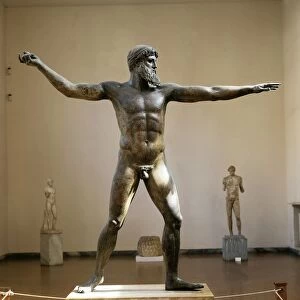Mouse Mat : Computer artwork of a beryllium atom
![]()

Home Decor from Science Photo Library
Computer artwork of a beryllium atom
Atomic structure. Computer artwork representing a single atom of beryllium (symbol: Be). This is the traditional way the structure of an atom is depicted, showing electrons orbiting in paths around a central nucleus. Beryllium contains four electrons (variously coloured), and a nucleus which has four protons and five neutrons (not seen). The number of electrically positive protons balances the number of negatively charged electrons. This image is highly schematic. Scientists now believe that electron orbits are more eccentric and electrons inhabit a " cloud of probability" rather than moving in well-defined orbital paths (often called the Bohr model)
Science Photo Library features Science and Medical images including photos and illustrations
Media ID 6283869
© MEHAU KULYK/SCIENCE PHOTO LIBRARY
Atom Atomic Atomic Structure B Eryllium Electron Electron Orbital Orbital Particle Physics
Mouse Pad
Bring some life into your office, or create a heartfelt gift, with a personalised deluxe Mouse Mat. Made of high-density black foam with a tough, stain-resistant inter-woven cloth cover they will brighten up any home or corporate office.
Archive quality photographic print in a durable wipe clean mouse mat with non slip backing. Works with all computer mice
Estimated Product Size is 19.7cm x 24.2cm (7.8" x 9.5")
These are individually made so all sizes are approximate
Artwork printed orientated as per the preview above, with landscape (horizontal) or portrait (vertical) orientation to match the source image.
EDITORS COMMENTS
This print showcases a computer artwork of a beryllium atom, providing an insight into its atomic structure. The traditional representation depicts electrons gracefully orbiting around the central nucleus, giving us a glimpse into the intricate dance within this minuscule world. Beryllium, symbolized by Be on the periodic table, consists of four electrons that are vividly colored in various shades. Although not visible in this image, the nucleus comprises four protons and five neutrons. The delicate balance between positively charged protons and negatively charged electrons creates stability within the atom. However, it is important to note that this highly schematic depiction has evolved over time as scientific understanding has advanced. Modern theories propose that electron orbits are more irregular and uncertain; instead of following well-defined paths like those depicted here (known as the Bohr model), they exist within a cloud of probability. This remarkable artwork not only highlights the beauty found at microscopic levels but also serves as a reminder of how our perception of atoms continues to evolve with scientific progress. It merges artistry with chemistry and particle physics to provide us with an awe-inspiring visual representation of beryllium's atomic structure.
MADE IN AUSTRALIA
Safe Shipping with 30 Day Money Back Guarantee
FREE PERSONALISATION*
We are proud to offer a range of customisation features including Personalised Captions, Color Filters and Picture Zoom Tools
SECURE PAYMENTS
We happily accept a wide range of payment options so you can pay for the things you need in the way that is most convenient for you
* Options may vary by product and licensing agreement. Zoomed Pictures can be adjusted in the Cart.




